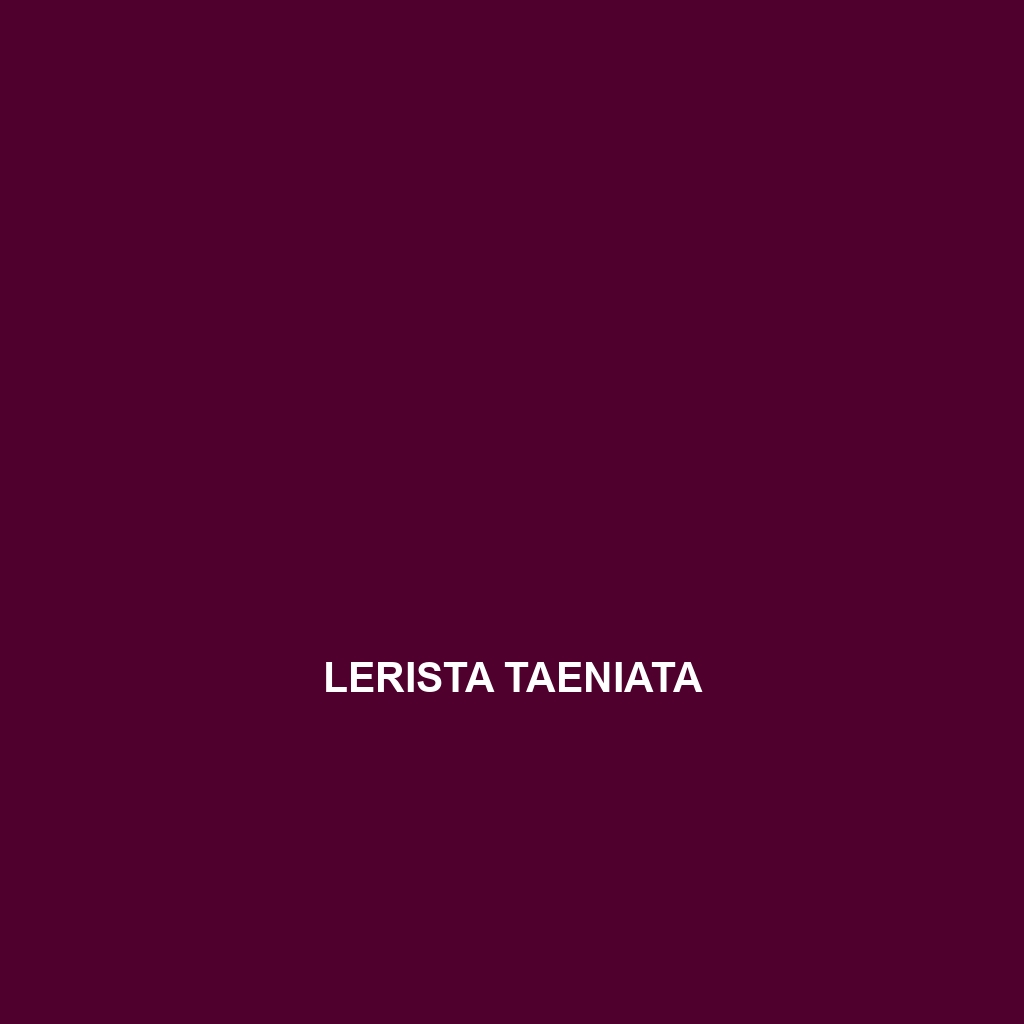Common Name
Lerista taeniata
Scientific Name
Lerista taeniata
Habitat
Lerista taeniata, commonly known as the striped skink, primarily inhabits the diverse landscapes of Australia. This species is often found in regions such as temperate forests, dry savannas, and grasslands. The climatic conditions in these areas range from warm and arid to humid, fostering a unique environment conducive to the survival of Lerista taeniata. The skink prefers sandy or loose soils that allow for burrowing, making these habitats ideal for its lifestyle. Often, Lerista taeniata is observed in areas rich in leaf litter and debris, which provide ample cover and hunting ground.
Physical Characteristics
Lerista taeniata is characterized by its elongated, slender body, typically measuring between 10 to 20 cm in length. This skink exhibits a distinctive coloration, usually a blend of brown or tan with dark stripes running parallel down its back. This unique pattern aids in camouflage against the forest floor or sandy substrate. Its smooth, shiny scales contribute to its streamlined shape, making it an adept burrower and a swift mover on the surface. The skink possesses small limbs, which are often less prominent than in other lizard species, reflecting its adaptation to a life spent primarily on the ground and in burrows.
Behavior
This species demonstrates mostly diurnal behavior but can exhibit nocturnal tendencies during extreme heat prevalent in its habitat. Lerista taeniata is known for its solitary nature, usually found alone except during mating seasons. The skink is agile, moving swiftly through leaf litter as it forages for food. Mating rituals are relatively simple, involving the male’s display of physical vigor, often seen during the warmer months, when they are most active. After mating, females tend to seek safe, hidden locations to lay their eggs, showcasing a strong instinct for protecting their offspring.
Diet
Lerista taeniata is primarily insectivorous, feeding on a diet that includes a variety of invertebrates such as ants, termites, and small insects. This skink has adaptations in its feeding habits that optimize its foraging efficiency. It generally hunts by ambush, lying in wait for prey to pass by before striking. However, it is also opportunistic and will consume any small organisms it can overpower, which may include small seeds and plant matter from nearby vegetation, highlighting its omnivorous tendencies.
Reproduction
The reproductive cycle of Lerista taeniata typically occurs in the warmer months, when temperatures rise and food is plentiful. Breeding generally takes place from September to November, and females can lay up to a dozen eggs at a time. The gestation period lasts between 2 to 3 months before the eggs are laid in soft, moist soil. Once hatched, the young skinks are independent, relying on their instinct to find food and shelter. Parental care is minimal, as adults do not protect their young after the eggs hatch.
Conservation Status
Currently, Lerista taeniata is classified as of least concern on the IUCN Red List. This status reflects a stable population in its natural habitat; however, it faces potential threats from habitat destruction due to urbanization and agriculture. Conservation efforts focus on maintaining its natural habitat and promoting awareness of the importance of preserving these unique ecological environments. Environmental education is essential to ensure the continued survival of this species.
Interesting Facts
One of the fascinating aspects of Lerista taeniata is its impressive ability to camouflage itself among the leaf litter and sandy soils, making it challenging for predators and researchers alike to spot. Additionally, the striped skink can pace rapidly when threatened, using its agility to evade capture. Its distinctive coloration not only serves as camouflage but also plays a role in its social interactions, with variations in stripes signaling different behaviors or readiness to mate. These remarkable adaptations have allowed Lerista taeniata to thrive in its ecological niche.
Role in Ecosystem
Lerista taeniata plays a vital role in its ecosystem as a predator of invertebrates, helping to control insect populations in its habitat. By preying on pests like ants and termites, it contributes to the ecological balance and health of the soil, which is crucial for maintaining plant life. Additionally, Lerista taeniata serves as a food source for larger predators, including birds and mammals, thus forming an integral part of the food chain. Its burrowing activities also aerate the soil, promoting plant growth and overall ecosystem vitality.
